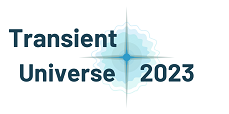Speaker
Description
Observations of supernovae (SNe) within a couple of days post explosion have the potential to probe the physics of their early evolution. This could provide insight into physics of several phenomenon including shock breakout, interactions with circumstellar material, and companion interactions. Unfortunately these early time observations are rare. I will present my work on automating the follow up of transients discovered in data from the the Gravitational wave Optical Transient Observatory (GOTO) in order to obtain this observations within the first few days post explosion. To this end I am looking into ways to use the pt5m telescope to provide an initial vetting of discovered transients. This involves simulating pt5m observations using archival and model data, and making use of machine learning to attempt to find criteria by which transients of interest can be identified. Following on from this work the goal will be to have the Liverpool Telescope (LT) take spectroscopic observations of these identified transients, with the ultimate goal of having all the observations taken autonomously within the same night.

